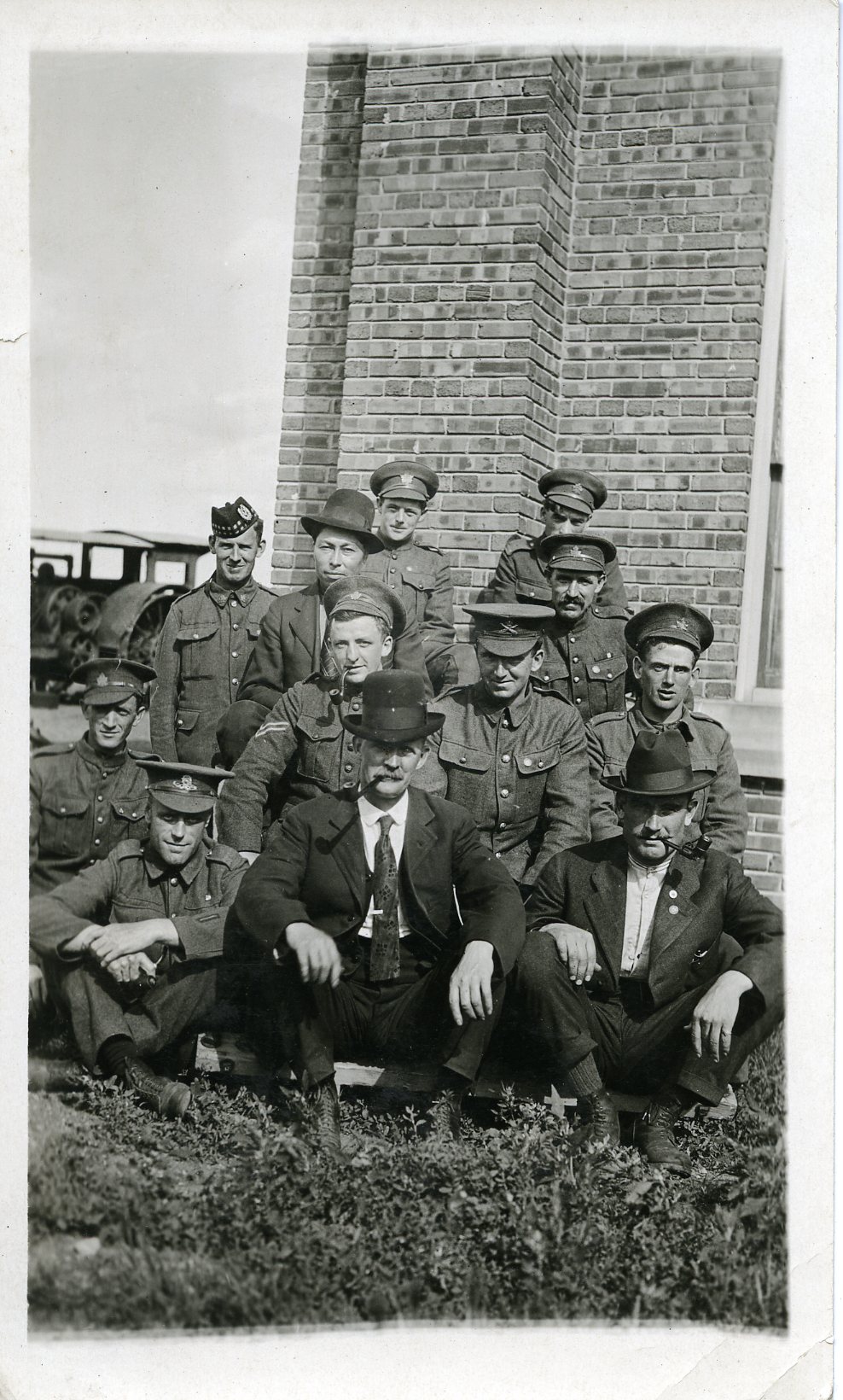Search Great War Images from the U of S
Returned Soldiers
 By August 1919 most Canadian soldiers had sailed for home. More than 170,000 soldiers returned to Canada suffering from a variety of ailments caused by poison gas, chronic illness and physical and psychological disabilities. Saskatchewan saw the highest casualty rate of all the provinces. Returning to civilian life had its challenges with many struggling to return to school and find employment . An economic downturn further complicated the lives of the war veterans. The Federal government had created the Department of Soldiers’ Civil Re-establishment in 1918, charged with providing vocational training as well as medical treatment. Those who were unable to work received government pensions; some went to school, and many received free land and money to start farms through the Soldier Settlement Act.
By August 1919 most Canadian soldiers had sailed for home. More than 170,000 soldiers returned to Canada suffering from a variety of ailments caused by poison gas, chronic illness and physical and psychological disabilities. Saskatchewan saw the highest casualty rate of all the provinces. Returning to civilian life had its challenges with many struggling to return to school and find employment . An economic downturn further complicated the lives of the war veterans. The Federal government had created the Department of Soldiers’ Civil Re-establishment in 1918, charged with providing vocational training as well as medical treatment. Those who were unable to work received government pensions; some went to school, and many received free land and money to start farms through the Soldier Settlement Act.
The University of Saskatchewan, and in particular President Walter Murray, was intricately involved in the process of reintegration of soldiers returning from Europe. In a letter to Professor Edmund Oliver, Murray acknowledged demobilization was “giving rise to a number of very difficult problems, and the attitude of the returned soldier is incalculable and important.” Murray created a program for veterans that “exempted them from fees, permitting them to register at any time during the academic year, and putting on special classes for high school matriculation subjects.” Through special Extension Short Courses and regular University classes, eventually 1,000 veterans were prepared for life after war.
The above link will take you material scanned from the University Archives and Special Collections Pamphlet Collection, The Sheaf, excerpts from President's Papers, 2001.1,B73 and images from the Photograph Collection.

